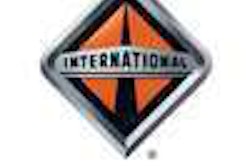Volvo Trucks North America now offers its D12 series engines as a North American remanufactured product backed by a two-year unlimited-mileage warranty. The company says remanufacturing the Volvo D12 in North America offers customers increased availability, faster delivery times and lower cost.
Mack Trucks’ “Clear the Decks” finance arrangements allow customers to take advantage of three programs to purchase or lease new trucks. The programs are offered in conjunction with Mack Financial Services through Dec. 31.
Peterbilt Motors will offer three new liquefied natural gas (LNG) configurations on its Models 387, 386 and 367 in 2009 as part of a joint agreement with Westport Innovations.
Load securement firm Ancra International acquired S-Line Cargo Control and Safety Products, which will operate as a wholly owned subsidiary. Terms were not announced.
Vipar Heavy Duty is opening parts distribution centers in the eastern and western parts of the United States.
Polaris Laboratories announced expanded business operations into Canada with the opening of its 4,000-square-foot fluid analysis laboratory in Edmonton, Alberta.
Mahle Clevite announced a new branding strategy for its North American aftermarket products. The company will transition all of its light vehicle engine part categories – except engine bearings – to the Mahle Original brand; all heavy-duty products remain with the Clevite brand.
Link Manufacturing announced the shipment of the company’s one millionth Cabmate Cab Air Suspension.
Two major fleet operators recently announced separately that they are pursuing hybrid systems that store and use hydraulic energy rather than electricity. UPS announced that it was buying seven Navistar hydraulic hybrid package delivery vehicles. Waste Management (WM), North America’s largest waste management company, announced that it will be field-testing four Peterbilt Model 320 HLA hybrid waste collection vehicles in Fort Worth, Texas.”There is no question that hydraulic hybrids, although little known to the public, are ready for prime-time use on the streets of America,” says David Abney, chief operating officer of Atlanta-based UPS.
But other than the basic physics involved in storing hydraulic pressure and the fact that Eaton Corp. developed both systems, the two applications of hydraulic hybrid technology are quite different.
The Navistar delivery van that UPS is purchasing uses hydraulics in a series configuration, meaning that the diesel engine drives the hydraulic system, which in turn drives the vehicle. The series hybrid hydraulic system replaces the conventional transmission with a hydrostatic transmission (HST), says Brad Bohlmann, business development manager for advanced technology with Eaton Corp.’s Fluid Power Group. Although new to on-highway trucks, the HST has been the preferred architecture for off-road vehicles for many years, Bohlmann notes.
The Peterbilt 320 that WM is field testing features Eaton’s Hydraulic Launch Assist system, which uses hydraulics in a parallel configuration. That means the hybrid system supplements the conventional vehicle driveline. The parallel hydraulic system is best suited for vehicles such as refuse trucks that brake and accelerate frequently, Bohlmann says.
The value proposition of the series hydraulic system is that it regenerates braking energy and operates the engine at a “sweet spot” of best fuel economy. The parallel HLA system is ideal for refuse because it provides a quick high-power boost that can actually allow the driver to make more stops in a given period of time, thereby boosting productivity, Bohlmann says. The regenerative braking improves fuel economy and substantially improves brake life, which may be more important for this type of application. Brake life is at least doubled, he says.
– Avery Vise
Navistar sticks with 2010 solution
Despite the decision of all other North American engine suppliers to adopt selective catalytic reduction, Navistar Truck and Engine Group last month said it still plans to offer “in-cylinder” diesel engine emissions solutions for the North American truck market in 2010. Navistar’s 2007-compliant big bore MaxxForce engines are now in limited production at its Huntsville, Ala., plant.
In a meeting with CCJ and other Randall-Reilly Publishing trucking editors, Timothy Shick, director of marketing for Navistar’s Engine Group, said the company will use its banked Environmental Protection Agency emissions credits to buy the time necessary to calibrate its engines to achieve the agency’s demands for oxides of nitrogen (NOx) reductions. Navistar received credits for earlier-than-required compliance and lower-than-required emissions performance dating back to the first exhaust gas recirculation (EGR) engines marketed by the company in 2004.
“All Navistar MaxxForce engines will be emissions-compliant for 2010, just as they are today,” Shick says. “If they weren’t, we couldn’t sell them.”
In Navistar’s solution, a high-pressure common-rail fuel injection system delivers diesel in a finer mist and with improved sequencing to allow for a more efficient fuel burn, Shick says. The MaxxForce’s high-strength compact graphite iron engine block is designed to handle the higher pressures. Other elements of the package include a proprietary combustion bowl design and advanced air management using exhaust gas recirculation. Some of the attributes of the MaxxForce include lower weight relative to competitors and the ability to achieve full torque at a lower rpm, allowing drivers to maintain top gear longer.
“Ultimately, Navistar doesn’t believe SCR technology is mandatory for meeting 2010 emissions regulations,” Shick says. “Our engineers are currently working hard on finding in-cylinder NOx and particulate emissions solutions that will give our customers productive, fuel-efficient and clean diesel engines without the added weight or complexity SCR systems add to trucks.”
– Jack Roberts












